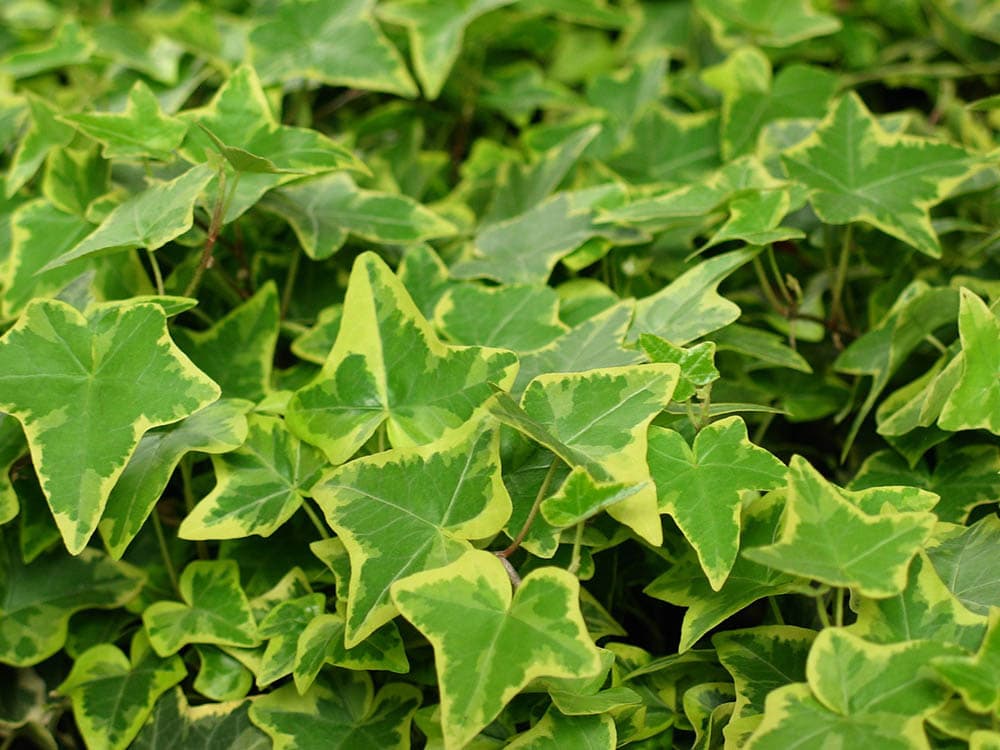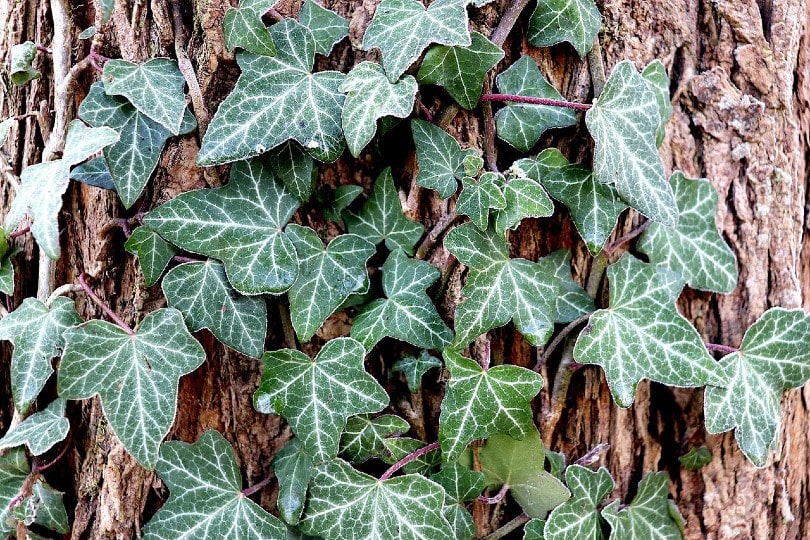How Much & How Often to Water Ivy: Steps, Facts & Traits
-
Brooke Bundy
- Last updated:

There are several different species of ivy, but English ivy is by far the most common. Brought over from the UK by colonists, English ivy trails across North America nestled in deep forests and entwined around homes and gardens. It is typically cultivated as an easy ground cover—although you might want to contain it given that it’s an invasive species, lest it take over your entire yard. You can also grow it as a houseplant that’s hard to kill. Here are some tips in helping your English ivy to thrive no matter where you live in the continental US.

English Ivy: Facts & Traits
There are over 400 cultivars of the English ivy species! Most of the cultivars vary by color and the type of growing conditions, but here are some things most cultivars have in common:
| Common Name: | English Ivy |
| Scientific Name: | Hedera helix |
| USDA Zones: | 4-10 |
| Type of plant: | Outdoor ground cover, or indoor houseplant |
| Soil: | Moist, well-draining, with a soil pH of 6.0-7.5 |
Once established, English ivy holds some pretty strong roots that aren’t easily shaken by environmental factors such as drought or extreme temperatures. As long as it has well-draining soil, it will tolerate most conditions.
All plants require light to grow. Most English ivy cultivars prefer part-sun, part-shade, but some may want more sun or shade depending on the particular cultivar and the growing conditions. For example, English ivy grows best in bright, indirect light as a houseplant. If you have a variegated variety, you definitely don’t want to place it in the direct sun because that will turn all of the leaves green. However, too little light will stunt your plant’s growth. Additionally, not all cultivars will be a good match for your region, so you might want to talk to your local plant nursery for the best care tips before you buy.

How to Water English Ivy
Even though ivy is considered a hardy plant, the one condition it really doesn’t like is dry, poor-draining soil. You should maintain a neutral to slightly acidic soil pH of 6.0-7.5, and not let your plant dry out for best results.
In general, water when the top inch of the soil is dry, or at least once a week. You might have to keep a more vigorous watch on your plant if you’re growing it outdoors during a drought than you would if it’s an indoor houseplant.
As long as it’s an established plant in well-draining soil, ivy is a pretty resilient plant that’s not easily deterred by tough growing conditions. However, keeping your ivy plant moist is especially important during the first few weeks of its life as it’s trying to establish its roots.
How to Propagate English Ivy
It’s recommended that you propagate English ivy as a houseplant instead of ground cover. Because it’s an invasive species, you must be very careful about growing English ivy outdoors in the open, and some states might even have regulations against it since it tends to take over surrounding vegetation. In 2010, the state of Oregon actually banned the transportation or sale of English ivy because it was choking out the native plants. Check with your local authorities or extension office before planting if you’re not certain about the rules in your state.
English ivy makes a pretty houseplant, with its long vines quietly flowing out of a window basket in your living room. It’s fairly easy to root, although it’ll take some time.
- Make your cutting. Snip about a 4–5-inch section from the parent plant, cutting just below one of the nodes. Pluck off the leaves near the bottom of the cutting, leaving a couple on the stem.
- Place in water or sandy soil. If you wish to propagate in water, you can stick the ends of the stems in water in a vase or old soda bottle. This is the easiest and quickest way, but the roots will be stronger if you start them in soil. Simply place 1 ½ inches of the cut ends of the stems in perlite or coarse sand and moisten. Place the container in a plastic bag or find another way to seal some of the moisture. Keep in indirect light and don’t let it dry out. The plant should sprout and develop roots strong enough for transplanting in 6-8 weeks.
In Conclusion
The rule of thumb with English ivy is to keep it moist. However, it’s equally important to make sure your plant resides in well-draining soil, so it doesn’t develop root rot. English ivy isn’t hard to grow, so much so that you’ll probably have to keep it contained so it doesn’t overtake your other plants.
- https://www.oregonlive.com/business/2010/02/oregon_bans_sale_of_english_iv.html
- https://hortnews.extension.iastate.edu/faq/how-can-i-propagate-english-ivy
- https://homeguides.sfgate.com/can-english-ivy-plants-full-sunlight-outside-95404.html
- https://www.gardeningknowhow.com/houseplants/ivy/ivy-plant-propagation.htm
- https://www.gardenerreport.com/how-to-water-ivy-plants/
- https://www.gardeningknowhow.com/houseplants/ivy/indoor-ivy-care.htm
Featured Image Credit: KRiemer, Pixabay
Contents
